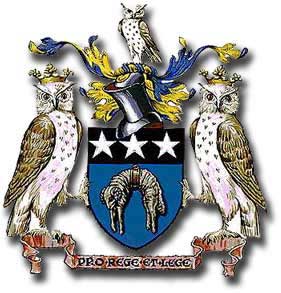 Part
2 - Results and table
Part
2 - Results and table
Football took an absolute age to take off in Leeds. The first match in
the area was staged on Boxing Day 1877 when two teams from Sheffield came
up for the day to stage an exhibition match. The first Hunslet Association
Football Club was formed the following year, although they only survived
five years. A second Hunslet team was founded in 1889 as Leeds Steelworks
and enjoyed some good local success, before folding in 1902 without a
ground to call their own.
However, in August 1904, some of the men behind Hunslet met at the Griffin
Hotel in Boar Lane to found Leeds City Association Football Club. They
also sanctioned the purchase of Holbeck Rugby Club's Elland Road ground
to function as their headquarters.
The men behind the West Yorkshire League, which was reformed in 1902
after its original four year life ended in 1898, were only too glad to
welcome Leeds City into the fold. Hunslet had dropped out before their
scheduled first game in the competition on 13 September 1902 against Dewsbury
Celtic, and the financial potential of the Citizens promised rich rewards
for the other member clubs.
A deal to take on the Elland Road ground was still being finalised as
the new season began with Leeds City struggling to a 2-2 draw at Morley's
Scatcherd Lane on 1 September 1904. City's 'home' match on 3 September
against Altofts and a friendly two days later against Bradford City had
to be played at the Wellington Ground in Low Road, where Hunslet had spent
their early years. Leeds City officials approved the lease of Elland Road
on 13 October, at an annual cost of £75 with the option to purchase the
ground the following March at a maximum price of £5,000. The lease was
eventually signed a month later, by which time the price had fallen to
£4,500.
On 17 September, City contested their first FA Cup-tie. As a new club,
they started at the bottom with a preliminary round tie at Rockingham
Colliery, who had finished runners up in the Barnsley Minor Cup the previous
season. The City line up was made up chiefly of players drawn from a variety
of the city's local clubs and read thus: W H Mallinson; Skeldon, H Dixon;
R Morris, T Morris, T Tennant; P Heffron, Page, Musgrave, Cummings, E
Simpson.
Although it was a relatively short journey to South Yorkshire, City arrived
late and the match kicked off 30 minutes after schedule. The village team,
roared on by an attendance of around 1,000, attacked up their ground's
slope in the first half with Meir and former Doncaster Rovers player Frank
Hulley getting the final touches to goalmouth scrambles to give the home
side a 2-0 half time lead.
City were being overrun and it was no surprise when Meir added another
goal with a low shot into the bottom corner.
The Colliery swarmed all round the City goal where W H Mallinson, a former
Sheffield Wednesday and New Brighton Tower goalkeeper, kept the score
down with a series of superb saves.
The reporter who covered the game for the Hoyland Gazette was
impressed by the custodian's display, writing, 'He had plenty of opportunity
of showing his Leeds friends what he is capable of doing. These opportunities
were not wasted on him and he did show them in that they have a custodian
of no mean ability. How on earth he saved three lightning shots in rapid
succession and at different angles was simply marvellous.'
Musgrave pulled a goal back for City, but it was too little, too late,
and Rockingham progressed to the next round where they lost to Sheffield
side Thorpe Hesley.
Apart from Mallinson, two other players had been on the books of League
clubs - Page with Liverpool and Cummings with Nottingham Forest, although
neither played in the first team. Cummings stayed a few months with Leeds
before joining Starbeck. By and large, though, the Leeds boys like 'Tipper'
Heffron and Tom Tennant were local amateurs thrown together to make a
team who were no match for a side who played together regularly.
City made their first appearance at their new Elland Road home on 15
October in a friendly against Hull City, with 3,000 spectators watching
the visitors win 2-0. The same day they were also due to play at home
against Dewsbury & Saville but failed to fulfil the fixture because of
a smallpox outbreak in Dewsbury and refused to play them at Holbeck.
Two weeks later, Leeds City recorded their first home win when they thrashed
Harrogate 5-1 in another friendly, although it was almost Christmas before
the club won at home in the West Yorkshire League.
To be fair, the local league competition was something of a sideshow
for City that season, and they refused to take matters too seriously,
having set their stall out to gain admission to the Football League. They
sought to increase their profile with some prestigious friendlies against
top class opposition, such as West Bromwich Albion, Burton United, Sheffield
United, Leicester Fosse, Derby County and Preston North End, with many
big name players turning out as guests in the City colours.
On four occasions, this strategy led to a clash between competitive fixtures
and friendly games and often it was a reserve team which fulfilled the
league commitment. City failed to complete their West Yorkshire League
programme, playing only 23 of the 26 matches, although it is understood
that their Leeds Hospital Cup match against Starbeck in January doubled
up as a league fixture. City were by no means a unique case and only five
out of fourteen clubs completed their fixture list that season. In a vain
attempt to catch up with the backlog, City 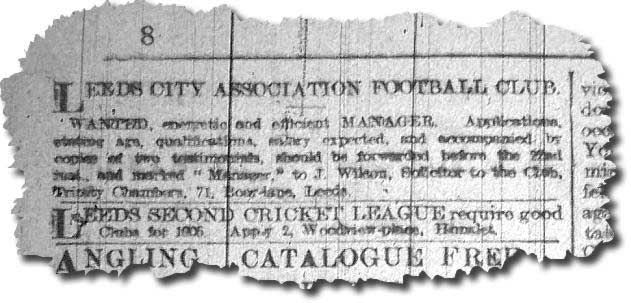 even
played two games on 25 April, winning both. A single goal saw off Huddersfield
at Elland Road while there was a 4-1 victory at Upper Armley Christ Church,
who had put City out of the Leeds Hospital Cup in February.
even
played two games on 25 April, winning both. A single goal saw off Huddersfield
at Elland Road while there was a 4-1 victory at Upper Armley Christ Church,
who had put City out of the Leeds Hospital Cup in February.
back to top
The Leeds Mercury reported that Cup defeat thus:
"Spirited rivalry was in evidence at Armley, where the local Christ Church
eleven entertained the leading Leeds team before a record crowd. The City
men had to operate against the wind in the initial period, but a sustained
attack by their front line early on culminated in a penalty being awarded
against Pickard, Armley's sterling defender. It proved fruitless, however,
and the home combination, spurred on by this good fortune, set up a hot
bombardment of the Leeds citadel, Coates, Johnson, Horner and Hooton essaying
shots. The City defence was at this period very capably sustained, Chaffer,
between the posts, being notably cool and resourceful. Armley continued
to gain favourable positions, but lack of precision at close quarters
spoilt their efforts, and it was within five minutes of the interval when,
from a quick passing movement, Coates opened the Churchmen's score.
"Excitement ran high after change of ends, when, after several ineffectual
excerpts, Austin thoroughly beat the opposition and scored the equalising
point for City. Both teams strove desperately hard after this, but the
coveted point was not forthcoming when 'time' was called, and extra play-time
being therefore necessary, the Christ Churchmen delighted their partisans
by winning a stirring contest with an odd goal in hand."
Bert Pickard, the Church team's defender, would soon sign for City.
The men who ran Leeds City cared little for the modest confines of the
West Yorkshire League, for their strategy of friendlies against Football
League opposition was paying dividends. In addition, they had appointed
their first manager.
Gilbert Gillies, who had steered
Chesterfield to a Football League spot in 1899, was one of more than 100
applicants who had responded to an advert on 13 February 1905, and his
appointment was announced in the Leeds Mercury on Tuesday 7 March:
"Another step towards the completion of the arrangements for the establishment
of the Leeds City as a club of first-rate standing was made last night,
when the recommendation of the sub-committee for the appointment of a
manager was approved by the General Committee at a meeting held at the
Griffin Hotel. There were over a hundred applicants for the position,
and, after reducing the number to five, the sub-committee decided that
Mr G Gillies, of Chesterfield, was the most suitable candidate.
"Mr Gillies, who is a Scotsman, and at present a journalist, has been
connected with Association football for over sixteen years, and has played
an active part in all departments of club management. During his association
with Chesterfield, the club has grown from a very small junior organisation,
and much of its success is due to the skill and energy which he has brought
to bear in its management. He has attended the meetings of the League
for the past six years, and is well appointed with club secretaries, whilst
his knowledge of players and the arrangements to be made for securing
admission to the competition will be of great service to the Leeds Club."
The succession of friendlies was also attracting fans to Elland Road
in no small numbers. The 2-2 draw against Sheffield United in February
merited this report in the Leeds Mercury: 'Although the conditions
were altogether against a good display, the 3,000 spectators who visited
Holbeck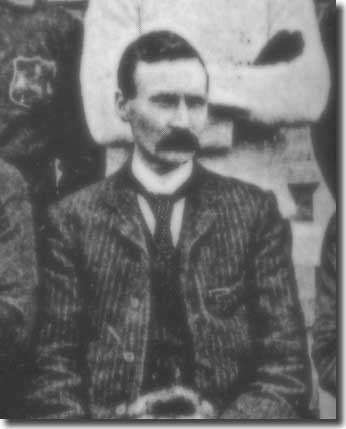 witnessed an interesting contest. The First League men were not as serious
as they might have been, but at the same time, it was evident that they
intended to win, and when Leeds equalised in the last minute, they were
greatly taken aback. In the first half the United scored after half an
hour's play, through Drake, and G Howard put Leeds on an equality a matter
of an hour later. Needham obtained the second point for the Sheffield
club, and Hunt equalised for Leeds.'
witnessed an interesting contest. The First League men were not as serious
as they might have been, but at the same time, it was evident that they
intended to win, and when Leeds equalised in the last minute, they were
greatly taken aback. In the first half the United scored after half an
hour's play, through Drake, and G Howard put Leeds on an equality a matter
of an hour later. Needham obtained the second point for the Sheffield
club, and Hunt equalised for Leeds.'
The visit of Derby County was rather less well received: 'Despite the
numerous counter-attractions, a fairly satisfactory gate witnessed the
game at Holbeck between the City and Derby County. There was naturally
a good deal of grumbling that Bloomer did not turn out, but the home club
were powerless in the matter. A strained leg was the excuse offered for
him carrying the flag on the touchline instead of donning the jersey on
the field; but he doubtless feared the risk of injury in view of the Welsh
international at Liverpool this afternoon.'
The Mercury also pondered whimsically on Yorkshire's seeming reluctance
to embrace Association Football and hinted at the rewards on offer:
'In one striking particular, Leeds holds a unique position in the world
of football. It is the only city in Great Britain with a population of
over a quarter of a million which does not possess a first-class Association
team, and indeed, prior to the dribbling code being taken up with such
tact and foresight at Bradford, the latter place, together with Leeds
and Hull, were for many years the only cities in the British Isles of
over 150,000 inhabitants where Association football of the highest class
was not firmly established.
'The fact that the three great Yorkshire cities mentioned have lagged
behind other large cities of the kingdom has to be attributed, of course,
to their connection with the Northern Union code. But the Bradford City
Association club, with average attendances approaching 10,000 and gate
receipts of nearly £200 per match, have shown what may be attained in
one season with a surrounding population of 280,000. What, therefore,
may be expected of a club conducted with the same amount of tact and foresight
in the area of Leeds, with its 440,000 inhabitants?
'Professional Socker has never been tried in any large centre of population
where it has not been a gigantic success. For instance, in 1892, when
the two junior Association teams of Manchester - Newton Heath and Ardwick
- were just coming to the fore, they had to fight their way, as Bradford
City did last season and as Leeds City will have to do, in a district
where the Rugby code was paramount, and at a time when such organisations
as Swinton, Swinton Hornets, Salford, Sale, Manchester, Manchester Rangers,
and Broughton Rangers were a power in the land. Yet the young Associationists
prospered in a way which soon outgrew all their rivals. Ardwick became
Manchester City, and Newton Heath Manchester United, and the clubs marched
from the Alliance into the Leagues. As showing what strides the dribbling
code rally has made in Manchester, it may be mentioned that on Christmas
Day, 1902, the two premier clubs met in the Second Division, and on the
same day, with the same weather and the same local interest, Broughton
and Salford also met. There were 17,000 spectators at the latter contest,
and no fewer than 49,000 to see the former, constituting a League record
which stands to this day; while attendances of over 40,000 have been recorded
at Clayton both this season and last.
back to top
'Leeds can and ought to have a status in this pastime. It is the fifth
largest city in the country, but as a football centre, compared with Birmingham,
Sheffield and Manchester, it is a nonentity. The Association game is proving
itself week by week to be a sport which in its appeal to human interest
has no rival except cricket, and it is a pastime in which the amateur
can and does play side by side with the professional without losing caste.
The strides it is making suggest that sooner or later Socker will capture
the whole of Yorkshire, and Leeds, as the geographical centre of the county,
will have to play its part in the movement.'
All the time, Gillies and the Leeds City officials were working steadily
towards the establishment of the new club, although there was some carping
among a public eager to purchase shares at delays in launching the associated
limited company. The Football Association took a month to approve City's
articles of association, but in April 1905 the company was floated with
an initial capital of 10,000 £1 shares.
On Monday 10 April, the shareholders of the limited company met at the
Griffin Hotel on Boar Lane to elect the board. Norris
Hepworth, a local clothing manufacturer and a major shareholder, was
elected as the club's first chairman. A W Pullin (the renowned Yorkshire
Evening Post sports journalist 'Old Ebor') was elected deputy chairman.
Frank Jarvis was elected honorary secretary, while John Furness became
honorary treasurer. The other directors were Ralph Younger (landlord of
the Old Peacock Inn), Oliver Tordoff, R S Kirk, Joseph Henry (a prominent
iron founder who had been actively involved with the Holbeck club), D
Whitaker, W Robinson, F G Dimery, W Preston, W G Child, John Oliver and
R M Dow (a former treasurer of Woolwich Arsenal).
The cementing of the club's finances, the excellent facilities at Elland
Road and the presence of an experienced football manager put Leeds City
in an exceptionally strong position to challenge for Football League status.
On Monday 29 May 1905, the voting took place at the annual meeting of
the Football League in London. City had two chances to make the breakthrough,
as after the initial vote for election, there was a second contest, with
the number of places in the League being extended from 36 to 40. Leeds
only required the first stage.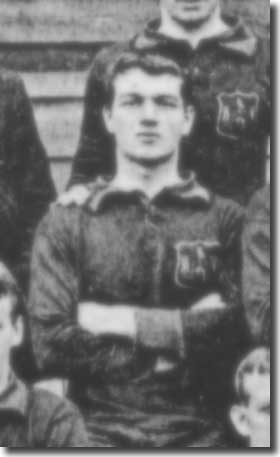 They came top of the poll with 25 votes, while Burslem Port Vale finished
second with 21 to gain re-election and Chelsea were also in with 20 votes.
They came top of the poll with 25 votes, while Burslem Port Vale finished
second with 21 to gain re-election and Chelsea were also in with 20 votes.
There was some ill-feeling among the unsuccessful candidates that as
new a club as City should gain a place at the first time of asking, but
the men behind the Elland Road club cared little about the controversy
and were jubilant about their success. The club was officially formed
into a limited liability company on 5 June and almost immediately work
began on building up the playing strength, as reported in the Leeds
Mercury: 'The managers of the Leeds Club have been very energetic,
and their work of securing an eleven which will meet all demands is in
a forward state. In this connection Mr G Gillies and Mr F Jarvis, the
manager and secretary respectively, are to be congratulated on the result
of their labours. Though the team which has already been got together
is fairly satisfactory, it is probable, now that a place in the competition
has been obtained, that it will be strengthened. One can well understand
that the managers wish to walk before they run, as it were, and the developments
which are made will in a large degree depend upon the measure of support
they receive.
'For the responsible position of goalkeeper, a particularly happy choice
has been made. Throughout last season Bromage played very cleverly with
Burton United, giving clear proof of his ability in front of the net.
Indeed, he had no superior in the Second League. In his immediate front
will appear Ray and Macdonald. Formerly of Stockport County, Ray was last
season the mainstay of the Chesterfield defence. A fearless tackler and
a judicious kicker, he took part during the last two seasons in as many
as sixty-six League matches out of a possible sixty-eight. Macdonald,
who will play on the right wing, comes from Blackburn. It may be remembered
that he assisted Leeds City against Barnsley in the last match of the
season, and so favourable was the impression which he gave that he was
immediately signed on.
'With regard to the half-back line, the transfers of several competent
men have been secured. Morgan entered the first-class game with the Liverpool
club, and ultimately migrated to Tottenham. Here he had the misfortune
to have his jaw broken early in the year, and was kept out of the team
as a consequence for several months. Henderson is well known as one of
the Bradford City trio; Stringfellow, though on Everton's transfer list,
has played with Swindon and Portsmouth since severing his connection with
the Goodison Park organisation; and Walker, late captain of Barrow, is
said to have been the best centre-half in the Lancashire Combination.
'Several of the men who have been engaged to fill the positions in the
front rank are excellent exponents. Morris, formerly of Liverpool, is
a Welsh international, having represented the Leek eight times in three
years against Scotland, England and Ireland. His position is inside-left.
Watson comes from Woolwich Arsenal with the reputation of being one of
the fastest forwards in the South, playing either at inside-right or centre.
Derby County have lost a good man in Parnell, who lost his place alongside
Bloomer through the brilliant form shown by the young amateur, Hounsfield.
Another man to be engaged from Burton United is Hargrave, the centre-forward.
He is a good shot, and feeds the wings well, and should prove a very useful
man for the very important position he is to fill. Amongst the other players
who have entered into agreement are Drain of Bradford City and Howard,
a youth who operated with such marked success with the City last season.'
Probably the most notable men brought in were Harry Bromage, Dick Ray
and Dickie Morris.
Custodian Bromage went on to make himself a firm favourite with the Elland
Road fans, making more than 150 appearances for the club over six years
and demonstrating his shot stopping abilities time and again. As well
as Burton United, for whom Bromage had shone in the Second Division for
a number of years, the keeper had also previously featured at Derby County.
back to top
29-year-old Ray had played under manager
Gillies at Chesterfield and was his choice as the first captain of Leeds
City after also playing for Macclesfield, 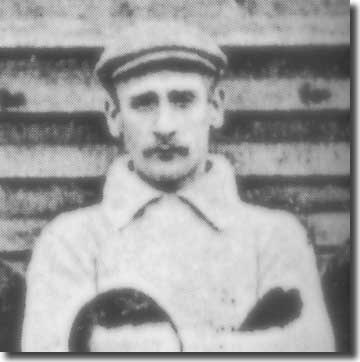 Burslem
Port Vale, Manchester City and Stockport County. He was to play a major
part in the formation of Leeds United and managed that club on two occasions
before moving on to Bradford City in 1935.
Burslem
Port Vale, Manchester City and Stockport County. He was to play a major
part in the formation of Leeds United and managed that club on two occasions
before moving on to Bradford City in 1935.
Inside-forward Dickie Morris had played for Druids and Newtown as well
as Liverpool, where he had won Welsh caps and proven himself a decent
footballer. He only had a short spell at Elland Road, moving on a year
later to Grimsby Town, but became the first City player to win an international
cap when he played against Scotland.
Another key signing was that of George Swift as trainer and right hand
man to Gillies. He had been a decent full-back in his prime with Wolves,
Loughborough and Leicester Fosse and had represented the Football League.
Swift had a good deal of influence on onfield activities and gave the
manager great support until he moved on to become Chesterfield boss a
year later.
Preparations were also under way to improve the facilities at Elland
Road, as reported in the Yorkshire Post in July: 'The ground at
Elland Road is now undergoing great improvement all round. To commence
with, arrangements are going forward with a view to improving the condition
of the surface. When the Holbeck Northern Union club used to play on the
enclosure there was rarely much grass on the ground. In this direction
it is expected there will be a decided improvement.
'During the present week some important alterations have been decided
upon to afford increased accommodation to spectators. It has been decided
to erect a new covered stand which will be 75 yards in length and 35 feet
in breadth. On it 4,000 or 5,000 persons will be, if necessary, accommodated.
In the centre a commodious Press box will be constructed.
'In addition, the old stand at the north side of the ground has been
pulled down, and it is proposed to erect a wind shelter right along the
west end. The present stand is in a dilapidated condition, and its demolition
is already in progress. On the terraces new 'treads' will be constructed,
and each terrace will be faced with creosoted battens. There will, when
the work is finished, be about 30 terraces extending right round the ground,
and accommodation for spectators will be largely increased. It is also
proposed to place posts inside the railings for a short length down each
side, but the rails at each end will be brought back a few feet, and this
will lengthen the playing area to 115 yards and its width will also be
increased to 72 yards, with a clear space of 10 to 11 feet between the
touchlines and the rails. The ground will then be quite large enough for
the playing of any matches governed by the rules of the Football Association.
'The prices of the season tickets have been fixed at 10s and a guinea,
and shareholders will be entitled to the higher priced tickets for the
sum of 15s. The lesser priced tickets will admit holders to the ground
only, while the others will pass to the ground and stand. In all 36 league
matches will be played within the enclosure, 19 being Second League games
and the remainder Midland League games played by the Reserve team.'
In the end, the new stand on the west side of the ground was able to
house 5,000 people and cost £1,050, increasing the Elland Road capacity
to 22,000.
As Leeds City approached their debut on the big stage, everything seemed
set for an exciting, if challenging, season.
Part
2 - Results and table












 even
played two games on 25 April, winning both. A single goal saw off Huddersfield
at Elland Road while there was a 4-1 victory at Upper Armley Christ Church,
who had put City out of the Leeds Hospital Cup in February.
even
played two games on 25 April, winning both. A single goal saw off Huddersfield
at Elland Road while there was a 4-1 victory at Upper Armley Christ Church,
who had put City out of the Leeds Hospital Cup in February. witnessed an interesting contest. The First League men were not as serious
as they might have been, but at the same time, it was evident that they
intended to win, and when Leeds equalised in the last minute, they were
greatly taken aback. In the first half the United scored after half an
hour's play, through Drake, and G Howard put Leeds on an equality a matter
of an hour later. Needham obtained the second point for the Sheffield
club, and Hunt equalised for Leeds.'
witnessed an interesting contest. The First League men were not as serious
as they might have been, but at the same time, it was evident that they
intended to win, and when Leeds equalised in the last minute, they were
greatly taken aback. In the first half the United scored after half an
hour's play, through Drake, and G Howard put Leeds on an equality a matter
of an hour later. Needham obtained the second point for the Sheffield
club, and Hunt equalised for Leeds.' They came top of the poll with 25 votes, while Burslem Port Vale finished
second with 21 to gain re-election and Chelsea were also in with 20 votes.
They came top of the poll with 25 votes, while Burslem Port Vale finished
second with 21 to gain re-election and Chelsea were also in with 20 votes. Burslem
Port Vale, Manchester City and Stockport County. He was to play a major
part in the formation of Leeds United and managed that club on two occasions
before moving on to Bradford City in 1935.
Burslem
Port Vale, Manchester City and Stockport County. He was to play a major
part in the formation of Leeds United and managed that club on two occasions
before moving on to Bradford City in 1935.